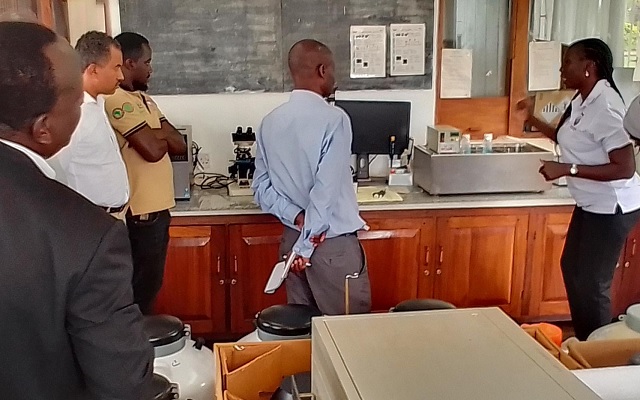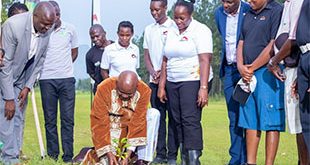
Kampala, Uganda | THE INDEPENDENT | Cattle farmers across different regions are experiencing a newfound sense of optimism as artificial insemination services become more readily accessible, thanks to the African Development Bank’s AVCDP project. To facilitate the availability and proper storage of semen at six AI centers in various regions, the government has distributed semen storage nitrogen cylinders and flasks.
This development eliminates the need for officers to travel to the National Animal Genetic Resources Centre and Data Bank (NAGRC & DB) in Entebbe, as the AI centers now have the necessary facilities for storage. Exotic high breed semen is extracted, frozen, and preserved in liquefied nitrogen at temperatures as low as negative 198 degrees. This ensures the viability of the sperms, as they would perish under normal temperatures.
Previously, acquiring semen and nitrogen from the NAGRC & DB in Entebbe posed challenges and incurred additional costs for the government and beneficiaries. Moreover, it caused inconvenience for farmers who had to wait until the semen was transported from Entebbe to their regions. With the distribution of equipment to the regional AI centers, this inconvenience is now a thing of the past.
The centers can obtain bulk quantities of semen from NAGRC-Entebbe and store them locally, ensuring timely availability for farmers. The benefiting AI centers include Luweero, Rubona, Mbarara, Gulu, Masindi, and Njeru. The procurement of this equipment is part of the Agricultural Value Chain Development project, which aims to improve agricultural production, handling, processing, marketing, and export.
This project’s animal component focuses on importing and breeding various exotic breeds of animals, such as cattle and goats, to enhance local breeds. Bulls are imported to extract semen for crossbreeding with local cows, which exhibit disease resistance and adaptability to weather variations
Fred Mayanja from the MAIF emphasized that the project aims to enhance dairy and beef production in the country, aligning with the objectives of the third National Development Plan. Its overarching goal is to generate household income and promote agricultural exports.
Dr. Jackson Mubiru, the acting executive director of NAGRC, expressed gratitude to the ADB mission team for witnessing the handover of equipment to the AI center personnel. He highlighted the project’s impact on assisting farmers and improving the nation’s animal stocks.
Recognizing the importance of preserving local breeds, Dr. Mubiru explained that many farmers opt for crossbreeding to combine the genetic advantages of exotic and local animals. However, some farmers who can afford it choose to exclusively raise exotic animals. Dr. Aloysius Julius Lumbuye, speaking on behalf of the benefitting AI centers, emphasized the cost-saving aspect of the project.
Previously, he had to travel to Entebbe monthly to pick up the necessary items, but now resources will be saved with local storage facilities.
Dr. Sheila Butungi, the Animal Breeding Coordinator on the AVCD project, mentioned that 72 AI technicians have been trained nationwide and equipped for fieldwork. The storage of semen had been a bottleneck, but now, with convenient storage available, artificial insemination services can be more easily accessible.
Asaph Nuwagira, the ADB Agricultural Rural Development specialist who led the supervision mission, stressed the importance of value addition to the country’s agricultural production for both local consumption and export purposes.
*****
URN
 The Independent Uganda: You get the Truth we Pay the Price
The Independent Uganda: You get the Truth we Pay the Price




